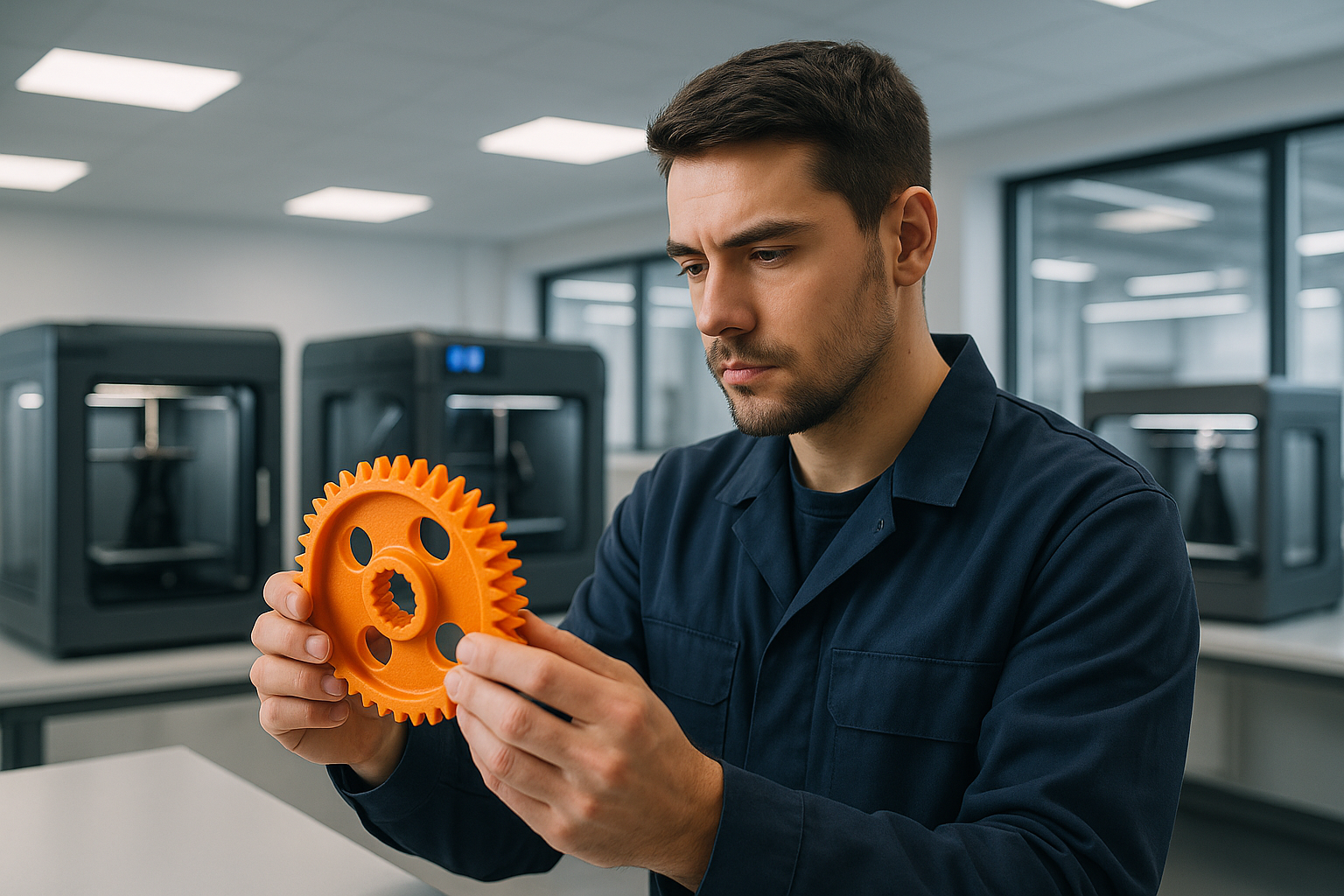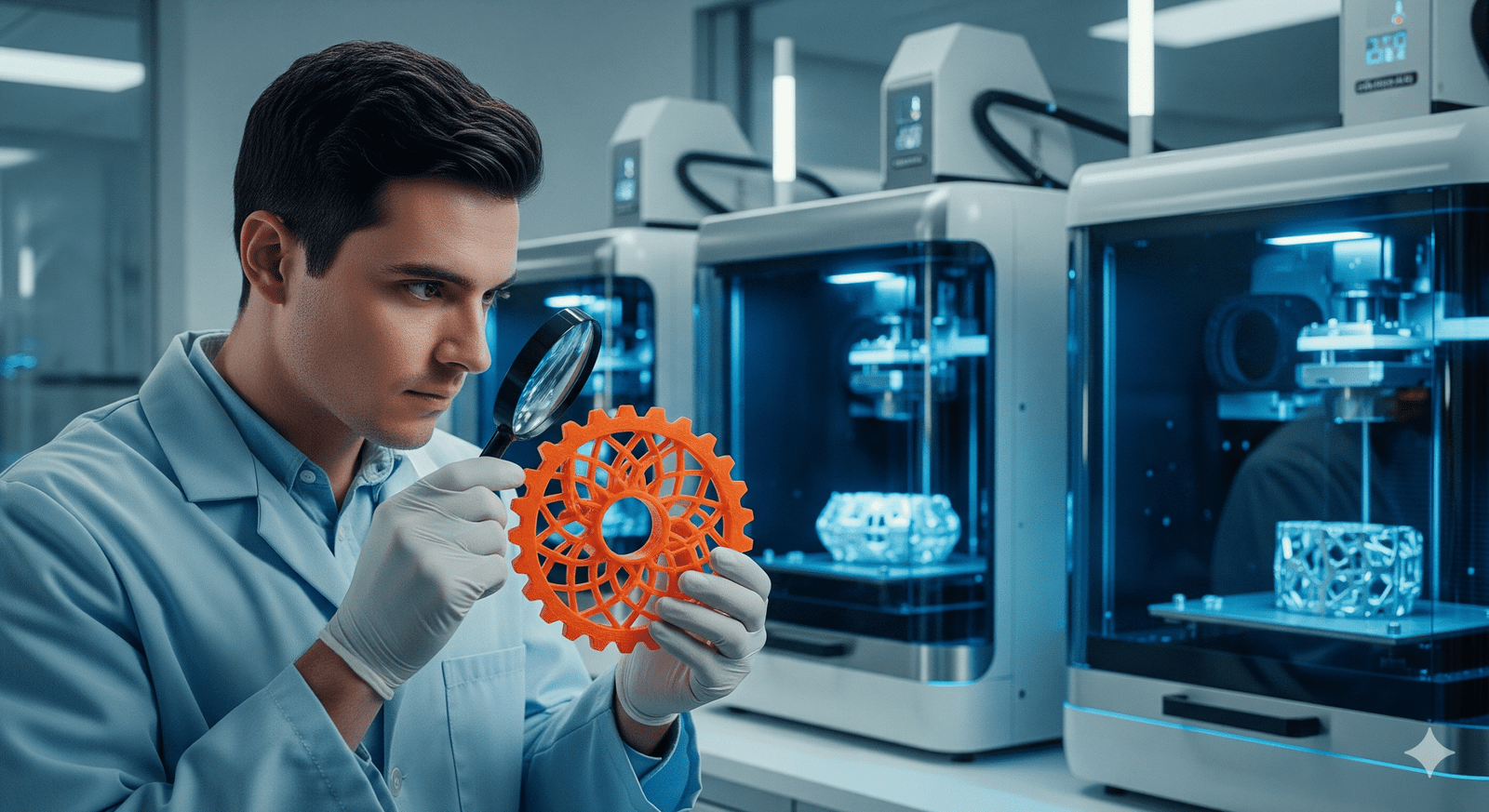I still remember the first time I walked into a traditional manufacturing workshop. The smell of cutting fluid, the deafening noise of the lathe machines, and the floor covered in metal shavings. For decades, this was the only reality for a diploma student in Mechanical or Production engineering. You were trained to cut material away to make a part.
But recently, I visited a “Smart Factory” in Bangalore, and the vibe was totally different. It was quiet. It smelled like warm plastic. And instead of greasy overalls, the technicians were wearing clean lab coats, monitoring a bank of machines that were building parts layer by layer.
This is the world of Additive Manufacturing (3D Printing), and here is the honest truth: It is creating more jobs for diploma holders than for degree engineers.
Why? Because engineers are often trained to design theories, but diploma students are trained to make things work. 3D printing is a messy, physical, temperamental process that needs a skilled pair of hands.
If you are a diploma student worrying that automation will eat your job, stop. 3D printing is automation, and it needs you to run it.
The Myth of the “Button Pusher”
A lot of students tell me, “Sir, isn’t 3D printing just loading a file and pressing a button?”
If it were that easy, every company would have zero failed prints. The reality is that industrial 3D printing is difficult. A printer is a robot that melts plastic or fuses metal dust with a laser. It is sensitive to temperature, humidity, and vibration.
The Real Job: Additive Manufacturing Technician Companies don’t need someone to just hit “start.” They need a technician who understands the physics of the machine.
- Bed Leveling & Calibration: If the print bed is off by 0.1mm (the thickness of a sheet of paper), a 20-hour print will fail.
- Material Science: You need to know that ABS plastic shrinks when it cools (warping), while PLA doesn’t. You need to know why Nylon absorbs moisture and ruins the print quality if you leave it out for an hour.
- Slicing Strategy: This is where you take a 3D model and use software to tell the printer how to move. A skilled technician knows exactly how to orient the part so it doesn’t snap under pressure.
Actionable Step: Download Ultimaker Cura (it’s free). Don’t just look at it. Import a model and try to “slice” it. Play with the infill density. If you can walk into an interview and explain why you chose a “gyroid” infill pattern over a “grid” pattern, you are already ahead of 90% of applicants.
The “Hidden” Career: Post-Processing Specialist
Here is a secret that nobody talks about in college brochures: 3D printed parts usually look ugly when they come out of the machine.
They have support structures (scaffolding) attached to them. They might have rough layer lines. They look unfinished.
In high-end industries like aerospace or medical, you cannot sell an ugly part. This has created a massive demand for Post-Processing Specialists.
I once met a student who wasn’t great at CAD design, but he had incredible patience with his hands. He found a job in a dental lab. His role? Taking 3D printed dental aligners, removing the supports, polishing them to be crystal clear, and curing them in UV ovens.
Common Mistake: Thinking “finishing” is unskilled labor. It’s not. If you sand a part too much, you change its dimensions, and it won’t fit the engine it was designed for. It requires a craftsman’s touch.
Tiny Checklist for Post-Processing Skills:
- Support Removal: Can you remove supports without leaving a scar on the model?
- Sanding & Painting: Do you know the grit progression (120 -> 400 -> 1000) to get a smooth finish?
- Vapor Smoothing: (Advanced) Using chemicals like acetone to melt the surface slightly for a glossy look.
Bridging the Gap: Design for Additive Manufacturing (DfAM)
Engineers design parts. But often, they design parts that are impossible to print.
They might design an overhang of 90 degrees with no support. Or a wall that is too thin to hold its own weight. This is where a CAD Technician comes in.
You don’t need to invent the engine. You just need to take the engineer’s design and make it printable. This is called DfAM (Design for Additive Manufacturing).
Case Study: The Automotive Jig A small car workshop used to spend ₹5,000 buying a metal fixture to hold a specific sensor in place during assembly. It took 2 weeks to arrive. They hired a diploma grad who knew Autodesk Fusion 360. He designed a plastic version of the fixture, printed it overnight, and it cost them ₹200 in material. Result: The workshop saved money, and the technician became indispensable.
Surprising Insight: You don’t need a degree to be a designer anymore. If you can use CAD software to solve a shop-floor problem (like making a custom holder for a messy tool), you are a designer.
The “Fixer” Opportunity: Machine Maintenance
3D printers break. A lot. Nozzles clog. Belts get loose. Motors overheat. Motherboards fry.
Most businesses do not have the time or expertise to fix these machines. They treat them like office paper printers—when they jam, panic sets in.
There is a growing market for 3D Printer Maintenance Technicians. This is classic Mechanical + Electrical work (perfect for Mechatronics diploma holders). You are essentially a specialized mechanic for robots.
What to learn:
- How to unclog a hotend (thermal creep).
- How to flash firmware (Marlin/Klipper).
- How to tighten timing belts to the correct tension.
How to Get These Jobs (A Real-World Strategy)
Don’t just upload your resume to a job portal and wait. That’s what everyone does.
1. Build a “Physical” Portfolio Do not bring a paper file to your interview. Bring a box of parts.
- “Sir, I printed this gear. I used PETG material because it needs to withstand heat. I printed it at a 45-degree angle to make the teeth stronger.”
- When a hiring manager sees you understand the process, they trust you.
2. Look in the Right Places Stop looking for “3D Printing Company.” Look for:
- Dental Labs: They are the biggest users of resin printing right now.
- Foundries: They use 3D printing to make sand casting patterns.
- Architectural Firms: They print scale models of buildings.
3. Get Certified (Cheaply) You don’t need an expensive course. Reliable resources like All3DP offer free guides that are better than many paid textbooks. Read about “FDM troubleshooting” until you know it by heart.
A Final Thought for the Future
The world is moving away from “Mass Production” (making 1 million of the same thing) to “Mass Customization” (making 1 million different things).
3D printing is the engine of this change. It’s not a sci-fi dream anymore; it’s a tool, just like a lathe or a CNC machine. The question is, are you going to be the one watching the machine, or the one commanding it?
For a diploma student with steady hands and a curious mind, the door is wide open. Walk through it.
Editor — Diviseema Polytechnic Editorial Team Curated by senior faculty and industry alumni. We verify every guide against current industry standards to ensure accuracy and relevance for students.
Disclaimer: Content is for educational purposes and not personalized financial or career advice.





